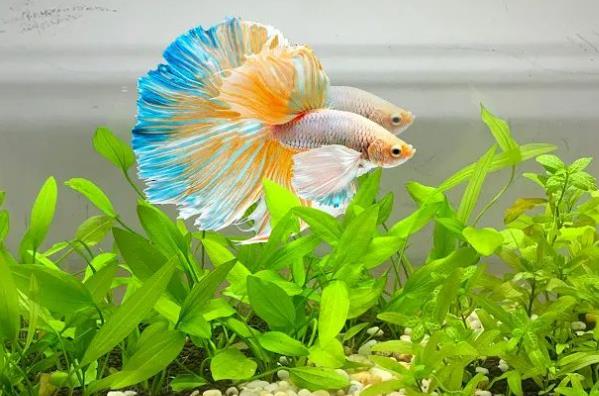Cleaning the betta fish tank is a crucial step in maintaining the healthy life of betta fish. Here is a detailed cleaning guide:

I. Preparations
1. Wash your hands: Before cleaning the fish tank, make sure to wash your hands with soap and rinse them thoroughly to ensure that no bacteria or dirt are brought in.
2. Cut off the power: Turn off electrical equipment in the fish tank such as heaters, filters, and lights, and remove them from the tank to prevent accidental water immersion or damage.
3. Prepare tools:
- A sink or bucket for holding the water from the fish tank.
- A plastic cup or a net bag for scooping up the fish and bailing out the water.
- Paper towels, a soft brush or a magnetic scraper for cleaning the inner walls of the fish tank.
- Water clarifier (optional) for purifying the water quality.
- A sieve and a plastic spoon for cleaning the gravel at the bottom of the fish tank.
II. Remove the Betta Fish and Water
1. Remove the betta fish: Gently scoop the betta fish out of the fish tank with a plastic cup or a net bag and put it into a clean container filled with some of the "old water" from the fish tank. Cover the container to prevent the betta fish from jumping out.
2. Scoop out part of the water: Use a plastic cup to bail out 50% to 80% of the water in the fish tank and place it in the sink for later use. If you are a novice fish keeper, you can start with 50% and gradually increase it to 80%.
III. Clean the Fish Tank
1. Empty the fish tank: Pour the remaining water in the fish tank through a sieve into the sink to prevent the gravel from sliding into the sewer. Meanwhile, take out the decorations in the fish tank together.
2. Clean the gravel: Put the gravel in a sieve, rinse it with warm water and rub it by hand to remove feces, dirt and residual fish food on the surface.
3. Clean the inner walls of the fish tank: Use a soft brush or a magnetic scraper to clean the inner walls of the fish tank, especially the areas with more moss and dirt. Be careful to avoid scratching the glass of the fish tank with hard objects.
4. Clean the decorations: Rinse the decorations with warm water, dry them with paper towels and set them aside for later use.
IV. Refill the Tank and Put the Fish Back
1. Refill the tank: Put the cleaned gravel and decorations back into the fish tank, then pour in some of the "old water" scooped out before. Next, add new water and an appropriate amount of water clarifier (if used), and stir with a plastic spoon to make the water fully mixed.
2. Adjust the water temperature: Make sure that the temperature of the new water is close to that of the old water, preferably between 18 and 26 degrees Celsius. If the water temperature changes too much, the betta fish may feel uncomfortable or even die. You can use a thermometer to monitor the water temperature and wait until the water temperature returns to room temperature before proceeding to the next step.
3. Put the betta fish back: Slowly tilt the container with the betta fish into the fish tank and let the betta fish swim out of the container by itself. Be careful to be gentle so as not to hurt the fins of the fish.
V. Subsequent Precautions
1. Observe the betta fish: After putting the betta fish back, observe its activities in the fish tank to ensure that there are no abnormal reactions.
2. Clean regularly: It is recommended to do a minor cleaning once a week and a major cleaning once a month to keep the fish tank clean and the water quality stable.
3. Pay attention to water quality: Regularly test the water quality indicators (such as pH value, ammonia nitrogen content, etc.) to ensure that the water quality meets the living requirements of betta fish.
Through the cleaning and maintenance steps mentioned above, the cleanliness of the betta fish tank and the stability of the water quality can be ensured, providing a healthy living environment for betta fish.
